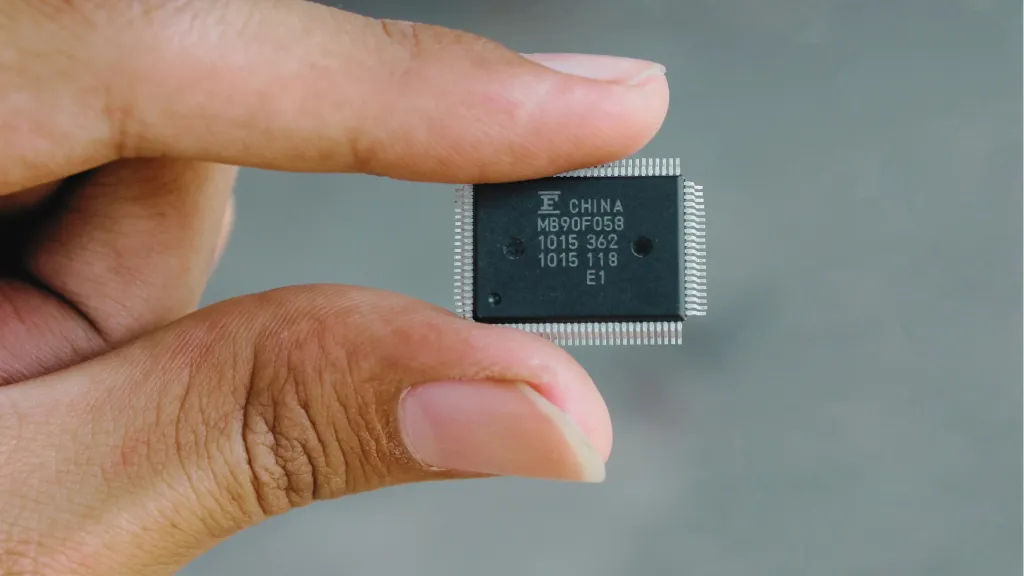Today, we will delve into the world of digital data and talk about something called the Least Significant Bit, or LSB for short. If you’re not familiar with binary numbers, don’t worry. Binary is simply a numbering system that computers use to store and process data. It consists of just two numbers: 0 and 1.
Now, let’s talk about the LSB. This term refers to the bit in a binary number that carries the least weight. It’s the bit farthest to the right in a binary number. But don’t let its position fool you. While it might be called the ‘least’ significant bit, it plays an incredibly crucial role in digital data storage and transmission.
So, buckle up as we dive deep into understanding the importance, working, and applications of the LSB.
Importance of LSB
Alright, let’s dive in! So, you might be wondering why something called the “Least Significant Bit” would be important, right? Well, despite its name, the LSB is anything but insignificant.
Firstly, the LSB is crucial when it comes to digital audio. It’s used to handle the quietest sounds that an audio file can produce. If we didn’t have LSBs, our audio experience could be much less detailed and nuanced. Imagine listening to your favorite song without hearing the subtle guitar strum or the faint beat of the drum in the background. That’s what it would be like without LSBs!
Secondly, the LSB is also a big deal in digital images. Each pixel of an image is represented by binary data, and guess what? The LSBs play a key role here, too! They help define the finer details and shades of color in a picture. Without them, our digital images wouldn’t be as vibrant or detailed.
Finally, the LSB is a fundamental player in data transmission, especially in wireless communication. It helps in error detection and correction, ensuring that the data you send from one device to another gets there accurately.
So, while the LSB might be called the “least” significant bit, it’s clear that it plays a major role in our digital world. Without it, our experiences with digital media like music, pictures, and even simple data transmission wouldn’t be the same. So here’s to the LSB, the unsung hero of the digital world!
Understanding LSB

Let’s get to know our little friend, the LSB, better. Remember how I mentioned that binary is made up of 0s and 1s? Well, these are called bits. The LSB is the bit farthest to the right in any binary number. Let’s take an example to understand this better.
Imagine we have a binary number, say, 1011. If we start from the right and move left, the first bit we encounter is 1. This rightmost bit is the LSB.
Now, why is it called the “least” significant bit? Each bit carries a different “weight in the binary system.” The weight increases as we move from right to left. So, the rightmost bit (LSB) carries the smallest weight, while the leftmost bit (the Most Significant Bit or MSB) carries the highest weight.
Let’s break this down using our example, 1011. If we assign weights to each bit, starting from the LSB, it would look something like this:
The LSB (rightmost '1'): 2^0 = 1
The next bit ('1'): 2^1 = 2
The next bit ('0'): 2^2 = 4
The MSB (leftmost '1'): 2^3 = 8As you can see, the weight of each bit doubles as we move from right to left, making the LSB the least “heavy” or significant when calculating the total value of the binary number.
But remember, despite carrying the least weight, the LSB still plays a vital role in digital data, whether creating detailed sounds in audio files, defining subtle shades in digital images, or ensuring accurate data transmission. It’s a small but mighty part of the binary world.
Applications of LSB
Now that we’ve gotten to know the LSB better let’s talk about where and how it’s used in the real world. Trust me, it’s pretty cool!
First up, digital audio. The LSB is hard at work when you’re jamming to your favorite tunes on your phone or computer. It helps to reproduce the quietest sounds in an audio file, allowing you to hear all the subtle details and nuances. Imagine a soft guitar strum or a whispering vocal – the LSB often handles these. Without it, our music wouldn’t sound nearly as rich or detailed.
Next, let’s talk about digital images. Each pixel in an image is represented by binary data, with the LSB often defining the finer details and shades of color. If you’ve ever marveled at the vibrant colors in a digital photograph or the lifelike details in digital art, you have the LSB to thank!
The LSB also plays a crucial role in wireless communication and data transmission. It helps in error detection and correction, ensuring that the data you send from one device to another gets there accurately. So, whether you’re sending an important work email or streaming your favorite show, the LSB ensures everything runs smoothly.
Finally, let’s not forget about cryptography and steganography, the art of hiding information. The LSB is often used in steganography to hide secret data within digital images or audio files. By changing the LSBs of the pixel values in an image or sample values in an audio file, we can hide secret information in plain sight.
So, as you can see, the LSB might be small, but it’s mighty! From enhancing our digital media experience to ensuring smooth data transmission to even hiding secret messages, it’s hard at work in many areas of our digital lives. It truly is an unsung hero of the binary world!
LSB vs MSB
Let’s get into the ring with two heavyweights of the binary world: LSB (Least Significant Bit) and MSB (Most Significant Bit). These two might seem like they’re on opposite ends of the spectrum (and they are), but both play essential roles in our digital lives.
Let’s start with the LSB. As previously discussed, the LSB is the rightmost bit in a binary number. It carries the least weight in terms of the total value of the binary number, but don’t let that fool you! The LSB plays a huge role in defining subtle details in digital audio and images, ensuring accurate data transmission, and even hiding data in steganography. Despite its name, it’s far from insignificant.
On the other side, we have the MSB. This is the leftmost bit in a binary number, carrying the most weight when calculating its total value. If the MSB changes, it can drastically alter the value of the entire binary number. That’s some serious power!
But the MSB’s importance isn’t just about numbers. It also plays a crucial role in digital systems. For example, in signed binary numbers (where numbers can be positive or negative), the MSB is often used as the “sign bit.” If the MSB is 0, the number is positive; if it’s 1, it is negative. So, the MSB can change the nature of the number!
So, in the LSB vs. MSB showdown, who wins? Well, it’s not really about winning or losing. Both the LSB and MSB have their unique roles and importance. They’re like two sides of the same coin, working together to make our digital world run smoothly.
Whether listening to music, viewing images, sending data, or determining positive and negative numbers, we need both the LSB and the MSB. So, it’s a tie!
Conclusion
We’ve taken a deep dive into the binary world and learned about two key players: the LSB and MSB. Both are essential in our digital lives, Whether the rightmost bit with the least weight (LSB) or the leftmost bit with the most weight (MSB).
From defining the subtle sounds in your favorite songs to the vibrant colors in digital images, the LSB is always there, working behind the scenes. Despite its name, it’s anything but insignificant!
On the other hand, the MSB can drastically change the value of a binary number. It’s like the big boss of the binary world! Plus, it often acts as the “sign bit,” determining whether a number is positive or negative.
So, in the end, it’s not about LSB vs. MSB or which one is better. They’re like two pieces of a puzzle, each with unique roles and importance. Without either one, our digital world wouldn’t be the same. So, here’s to the LSB and MSB, the unsung heroes of the binary world!
And that’s a wrap! I hope you enjoyed this journey as much as I did. Remember, every bit counts, even in a world filled with 0s and 1s. Until next time, keep exploring!






